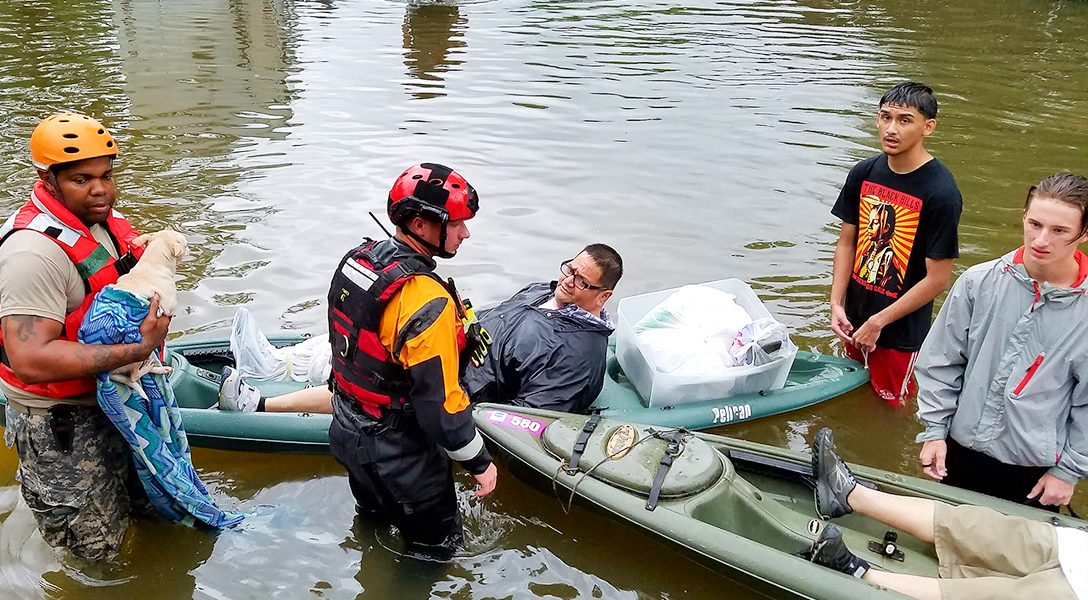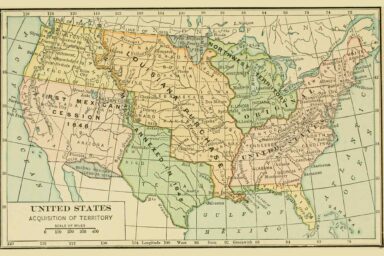As if flood and winds aren’t enough, hurricane victims must also deal with carcinogenic toxins floating into their backyards.
Superfund sites are defined by the Environmental Protection Agency (EPA) as highly polluted areas requiring a long-term response to clean up hazardous materials and contamination.
Most came about due to lax regulations that allowed the discharge of very hazardous and often carcinogenic chemicals. The EPA was ordered to create a National Priorities List of such locations, and to oversee their cleanup.
Dozens of these Superfund sites were in the footprint of the floodwaters of Hurricane Harvey. Another 22 of these sites exist in Florida. During Harvey, no attempt was made to secure Superfund sites from flooding and, as water receded, the EPA was very slow to respond.
Since then, there has been much pressure on the agency to come up with a plan to secure these sites in Florida, to give people fair warning and have a post-Hurricane Irma plan.
While it appears that the EPA has learned some lessons from Harvey, the agency remains understaffed and underfunded for the full scope of the potential public health crisis.
Shaughnessy Naughton is a chemist, a cancer researcher, and the founder of 314 Action, a pro-science group dedicated to getting more scientists involved in public policy. In this podcast, Naughton talks with WhoWhatWhy’s Jeff Schechtman about the compounded dangers facing flood victims, and what can be done to help them.


Click HERE to Download Mp3
Full Text Transcript:
As a service to our readers, we provide transcripts with our podcasts. We try to ensure that these transcripts do not include errors. However, due to resource constraints, we are not always able to proofread them as closely as we would like, and we hope that you will excuse any errors that slipped through.
| Jeff Schechtman: | Welcome to Radio WhoWhatWhy. I’m Jeff Schechtman. In the wake of Hurricane Harvey a number of Superfund sites, toxic sites in Houston, were flooded with little awareness of what would happen to the toxic runoff. We do know that people are now showing up at clinics and hospitals with unknown rashes and illnesses that don’t seem to be related to the storm itself. As has been reported, the EPA has been slow to act after the fact and no preemptive warnings or precautions were really taken. |
| Now with Irma about to hit Florida and many such toxic sites around that state, many are calling on the EPA to be proactive, to warn people, to shore up these sites, and to quickly respond to any damage. One such group making this request is the group 314 Action, headed by our guest, Shaughnessy Naughton. Shaughnessy Naughton is a chemist, a career cancer researcher, and the founder of the nationally recognized group 314 Action. It is my pleasure to welcome her back here to Radio WhoWhatWhy. Shaughnessy, thanks so much for joining us. | |
| Shaughnessy Naughton: | Hi Jeff, thanks for having me. |
| Jeff Schechtman: | First of all, I want to talk about Houston and how many of these toxic sites were around the state, as far as we know. |
| Shaughnessy Naughton: | In the Houston area there were 13 Superfund sites that flooded. What was really troubling beyond the floods was the EPA’s slow reaction to it and really not giving citizens the information they need to … When they go back to their homes having been inundated with water, sometimes from Superfund sites, to know how to handle that and how to protect themselves and their families before they delve in to cleaning up their homes. |
| Jeff Schechtman: | For our listeners that don’t know, that may have heard the term and really don’t understand the context, tell us what Superfund sites are. |
| Shaughnessy Naughton: | Superfund sites are sites that the EPA has designated in need of cleaning up. In the Houston area many of them are related to the petrochemical industry, so they have a lot of very toxic chemicals like benzene and dioxins that have long-term health implications for humans and animals. |
| Jeff Schechtman: | In terms of these sites, what do we know at this point? How much of an idea do we have, how many of these chemicals have actually now gotten into some of these flood waters, have actually touched people, and maybe even getting into the water supply in the city? |
| Shaughnessy Naughton: | That’s really what we’re looking to the EPA to be monitoring and letting people know, because at this point I don’t think we do have a very clear picture of what is going on. One of the things that I found very troubling from the stories in Houston was reporters from the Associated Press were able to access these Superfund sites that had been flooded before the EPA even made it there, and the EPA saying that it was too dangerous to access these sites when it’s certainly dangerous when civilians are going back to their homes that have been contaminated with some of these chemicals. That is the role of the federal government, is to protect our citizens and that includes from environmental disasters. |
| Jeff Schechtman: | In the past, and we’ve certainly had hurricanes and flooding before, what do we know about what the EPA has done in previous similar incidents? |
| Shaughnessy Naughton: | They certainly work on securing the sites prior to storms so that there isn’t flooding. But with the size and scope of Harvey and the way Irma is looking, I think the EPA needs to have a better reaction plan of how they’re going to respond the day after the hurricane and to get information out to citizens and to secure the areas as best as possible. |
| Jeff Schechtman: | What do we know about the amount of Superfund sites in Florida, in the area that could be hit directly and most impactfully by this storm? |
| Shaughnessy Naughton: | There are 22 Superfund sites in southern Florida, some of them in pretty high population density areas. This is something that I believe the EPA is learning from the mistakes made in Houston, but we really need them to make sure to be getting out information to citizens as soon as possible. |
| Jeff Schechtman: | What, if anything, has the EPA done to warn people near these sites in Florida or shore up some of these sites prior to Irma hitting? |
| Shaughnessy Naughton: | There has been work done on that but again, at this point I don’t know how much could really be done prior to the storm hitting. What they really need to be focusing on is having a plan of action for after the storm for cleaning it up, and also informing people as to how to keep themselves and their families safe, if there is contamination from the Superfund sites in the flooding. |
| Jeff Schechtman: | Once this contamination happens, once these chemicals get into the water, what can be done to clean it up as quickly as possible? |
| Shaughnessy Naughton: | It really depends. There are thousands and thousands of chemicals and each Superfund site has its own, I guess, lists of top pollutants so I don’t think you can say broadly how that would be mitigated. It certainly would be the job of the EPA to inform the residents that live around particular Superfund sites of the particular dangers that they might be facing, if there is a massive flooding. |
| Jeff Schechtman: | What are some of the specific public health dangers that may come from these sites? |
| Shaughnessy Naughton: | Things like dioxins and benzene have … Benzene is carcinogenic, they can have long-term, very dangerous health effects for people and animals. Some of the other chemicals found in them can cause burns and rashes, and some of the things that we’re hearing about but in the long run perhaps aren’t quite as serious. |
| Jeff Schechtman: | By the EPA not acting as aggressively or as quickly as it should, is the EPA and the government leaving themselves open to lawsuits in these situations? |
| Shaughnessy Naughton: | It certainly seems reckless to me. I think this agenda by the Trump Administration and Scott Pruitt, the Administrator of the EPA, to defund the agency and cut regulations on everything regardless of whether they are there for a good reason, is really dangerous and reckless, and frankly not a good use of taxpayer money to not be proactively preparing for the effects of climate change, which is certainly one of their top agenda items, is to ignore the existence of it. |
| Jeff Schechtman: | What funds have been cut, as far as we know, within the EPA with respect to things that directly impact these Superfund sites? |
| Shaughnessy Naughton: | If you look at the proposed budget from the Trump Administration, which I don’t think is getting a lot of traction with Republicans and Democrats in Congress, they were pretty draconian cuts to the agency from research to oversight. One of the things the EPA needs to be doing after these disasters is monitoring the air and water and soil to see what the extent of contamination is and then of course, addressing the clean-up. When you’re talking about cuts from 30% to an agency like the EPA that is really going to affect the public health and welfare of people, particularly ones living around flooded Superfund sites. |
| Jeff Schechtman: | How long could these toxic impacts really have an effect on the population? |
| Shaughnessy Naughton: | It really depends on the chemicals. When you’re talking about … Again, I keep going back to benzene and dioxins, those can have very, very long-term effects when it just really depends on what the contaminant is as to how long the half-life is. |
| Jeff Schechtman: | Talk a little bit about the scientific community, the scientists that 314 Action is dealing with, and what you’re hearing in terms of concerns among the scientific community for some of these issues that we’ve been talking about. |
| Shaughnessy Naughton: | Our organization was founded to encourage scientists to go beyond just advocacy and actually get involved in electoral politics, whether that’s run for offices themselves or holding public officials accountable and making sure that they’re basing policy and legislation on sound facts and science. We have spoken … We have had thousands of scientists reach out to us this year just in varying stages of anger and dismay as to what is going on currently with this administration, as far as the attacks on science and frankly what feels like an assault on facts at this point. Particularly when it comes to issues that are… involve public health like the EPA is so involved in, we hear a lot of scientists reaching out to us saying, “You know, we know better and we need to be doing more.” That’s something I am encouraged to see from the reaction to this administration, is that there are many more people stepping up to get involved than I’ve ever seen before. |
| Jeff Schechtman: | What should the public in general – obviously the people in Florida even more so – but what should the public in general be looking for, be listening for, in terms of attention being paid to these sites, these issues? |
| Shaughnessy Naughton: | I think we need to think long-term and going back to the blind disregard for the need of, for sensible regulations that we see in this administration, those are put there for a reason. Of course sometimes they can be burdensome, but they also are very important for keeping our air and water and land clean and free of pollutants in the first place. If we hadn’t messed up … A lot of these sites date back 40, 50 years. If we had had regulations at that time, we wouldn’t be facing these problems now and I think that’s something that we should all keep in mind when we hear public officials disregarding the need for oversight, especially when it comes to the environment. |
| Jeff Schechtman: | Shaughnessy Naughton, she’s the founder of 314 Action. Thanks so much for spending time with us here on Radio WhoWhatWhy. |
| Shaughnessy Naughton: | Thanks a lot, Jeff, take care. |
| Jeff Schechtman: | Thank you. Thank you for listening and joining us here on Radio WhoWhatWhy. I hope you join us next week for another Radio WhoWhatWhy podcast. I’m Jeff Schechtman. If you like this podcast, please feel free to share and help others find it by rating and reviewing it on iTunes. You can also support this podcast and all the work we do by going to WhoWhatWhy.org/donate. |
Related front page panorama photo credit: Adapted by WhoWhatWhy from Superfund sign (EPA) and map (Duke).



